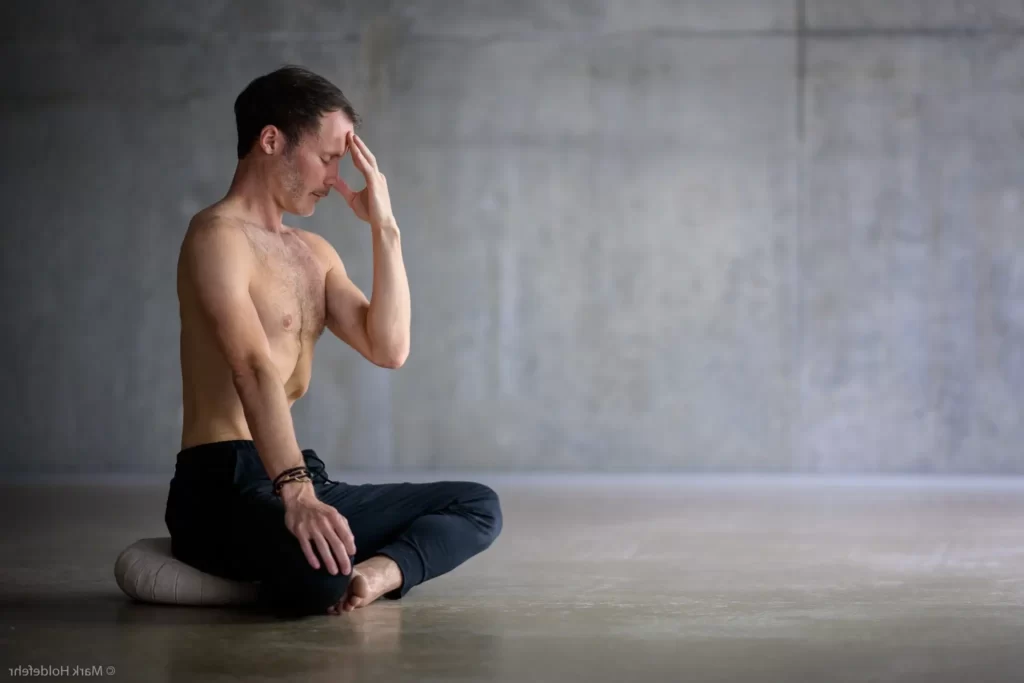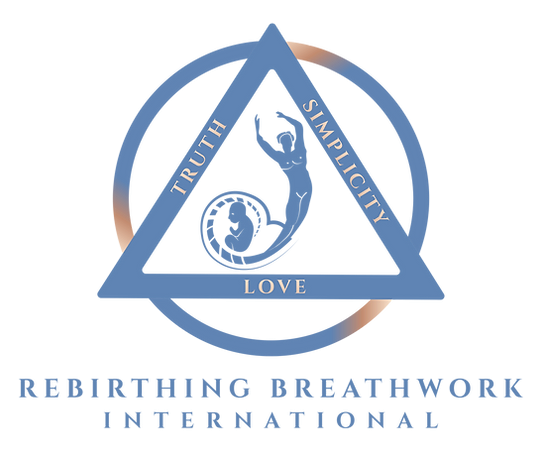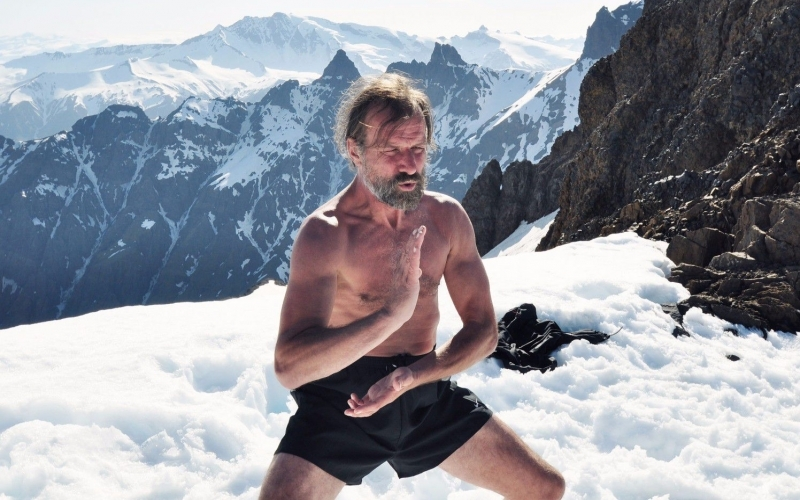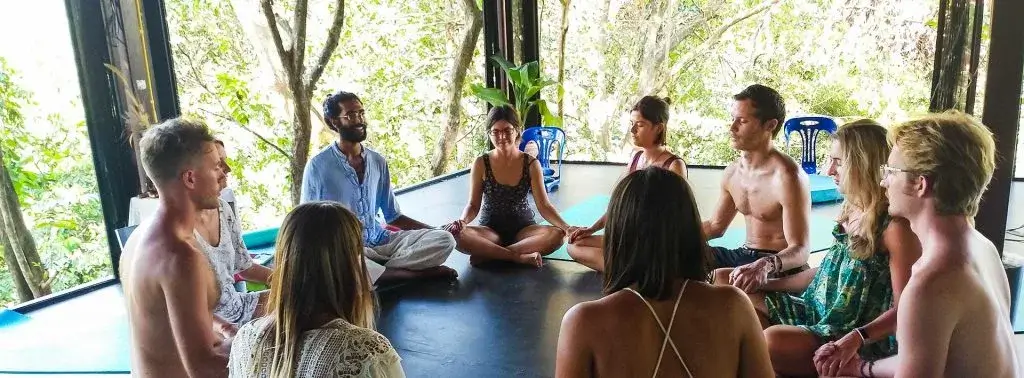🜁 Breathwork 🜁
pranayama, holotropique, rebirthing,
la Méthode wim hof &
soma breath
Introduction
Le Souffle a joué un rôle primordial tout au long de l’histoire de l’humanité, surtout lorsqu’il s’agit de rester en vie ! Les mots “Esprit” et “Souffle” ont les mêmes racines à travers les langues, le mot latin “spirare” (esprit) signifiant “respirer”. Cette liaison importante entre l’esprit et le souffle n’est pas surprenante, puisque les techniques de respiration ont joué un rôle central dans de nombreuses cultures, traditions et religions anciennes, notamment le taoïsme, le qigong, le bouddhisme, l’hindouisme, le yoga, le christianisme, le chamanisme et les arts martiaux.
Notre souffle est notre force vitale, et sa maîtrise a conduit l’humanité dans les profondeurs de la découverte de soi, de la guérison et de la transformation. La respiration a de multiples facettes. Elle est le chemin vers le subconscient de l’esprit. La réguler et la ‘travailler’ correctement et consciemment est donc d’une importance vitale pour notre expérience de la vie. Elle est le lien entre le monde externe et le monde interne. C’est le pont entre le Corps et l’Esprit. C’est l’énergie.
La Respiration Consciente
Que vous en soyez conscient ou non, vous respirez à tout moment. La Respiration Consciente est un terme générique pour les méthodes qui dirigent votre conscience vers votre respiration. Lorsque votre esprit est fixé sur le processus de respiration, vous pouvez déjà améliorer le processus lui-même, en prenant de meilleures habitudes. Elle encourage également la pleine conscience, une première étape vers la méditation.
Sur le plan physique, la respiration consciente a un impact sur plusieurs domaines :
- Système Respiratoire
- Système Digestif
- Système Circulatoire/Cardiaque
- Système Endocrinien
- Système Nerveux
BreathworkBreathwork est exactement ce qu’il semble être. C’est le processus qui consiste à travailler la respiration, consciemment, dans le but d’avoir un impact sur les zones les plus profondes du ‘Soi’. Par ‘zones profondes’ je fais surtout référence au système nerveux et le système endocrinien (hormonal), et donc au Mental, puisque nos pensées sont régies par ces énergies hormonales et nerveuses – notre physiologie.
Travailler consciemment la respiration est aussi un moyen de puiser dans notre Système Énergétique, ou Système Émotionnel. systemVotre respiration crée l’énergie sous forme d’ATP (adénosine triphosphate) et vos émotions sont des flux d’informations provenant de tous les systèmes corporels, qui pénètrent dans votre cerveau sous forme de signaux électriques, électromagnétiques, chimiques, de pression, etc… (Dr. Alan Watkins). Changer la façon dont vous respirez modifiera inévitablement votre biochimie (oxygène, dioxyde de carbone, pH…), affectant à son tour votre ATP (énergie) et toute énergie bloquée, vécue comme une émotion.
En raison du stress émotionnel excessif que nous subissons dans la ‘course du monde moderne’, qui conduit sans surprise à des niveaux élevés d’anxiété et de dépression, il n’est pas étonnant que le Breathwork ait gagné en popularité. Le Breathwork a été personnellement très transformateur, et je ne peux pas le comparer à aucune autre expérience que j’ai eue dans ma pratique personnelle. Après avoir considérablement pratiqué le Pranayama (Respiration Yogique), le Breathwork moderne (Holotropic, Rebirthing) et la fusion des deux (SOMA Breath & La Méthode Wim Hof, j’ai décidé de les décomposer.
Pranayama
Dans la tradition Indienne du Yoga, le Pranayama est la science et la pratique anciennes de la manipulation de la force vitale du corps, ou énergie subtile (prana), par la maîtrise de la respiration. Le Pranayama peut être traduit par “contrôle de la respiration” et par “extension et expansion de l’énergie/respiration”.
Plus précisément, il s’agit de la capacité à absorber et à diriger le prana, en contrôlant consciemment cette énergie vitale.
Au début, nous explorons les effets de la modification de nos inspirations et expirations, en y apportant notre conscience et en les rallongeant. L’exploration de la respiration rythmique est la fondation de la pratique du pranayama. Plus tard, nous commençons à introduire progressivement les rétentions de souffle, traduit en Sanskrit par kumbhaka. Le Pranayama peut en fait être défini comme la Rétention elle-même, étant le conteneur dans lequel une conscience accrue et la “magie” se produisent, alors que le prana s’intensifie et est dirigé vers un but spécifique.
Le Pranayama est le début du travail avec les énergies subtiles dans le corps, et la direction de votre attention vers elles. Diriger l’esprit pour qu’il prenne conscience des activités subtiles est le début du de Yoga – de l’union entre corps et esprit.

Il existe une multitude de techniques différentes et de façons de les appliquer, certaines ayant un effet calmant et relaxant, d’autres un effet plus équilibré et harmonisant à tous les niveaux, tandis que d’autres peuvent être carrément explosives et énergisantes. Il s’agit d’une pratique et d’une science intemporelles et finalement libératrices. Si vous souhaitez explorer les techniques de Pranayama plus en détail, ou en discuter, n’hésitez pas à me contacter ici.
HOLOTROPIC BREATHWORK & REBIRTHING
Stanislav Grof, psychiatre d’origine tchèque aujourd’hui âgé de 90 ans, est titulaire d’un Masters en psychiatrie et d’un Doctorat en médecine. Il avait l’habitude de travailler avec le LSD comme forme de thérapie psychédélique, mais après son illégalisation dans les années 1960, Grof a remplacé le psychoactif par des techniques de respiration. Avec sa femme Christina Grof, auteur, enseignante, artiste et psychothérapeute, ils ont créé la Respiration Holotropique (du grec holos, qui signifie “entier”, et trepein, qui se traduit par “progresser vers quelque chose”). L’objectif principal de ce type de respiration est de recâbler le cerveau, favorisant la libération des émotions, l’augmentation du niveau de conscience de soi, l’amélioration du caractère et l’exploration spirituelle.. Certains rapports suggèrent que ce type de thérapie peut être utilisé pour traiter un large éventail de problèmes psychologiques et existentiels. La musique intense et dynamique joue également un rôle central dans la respiration holotropique, qui finit par se calmer après son aboutissement. Les séances peuvent durer plusieurs heures et se terminent par une forme d’expression créative, comme un dessin de mandala , et une discussion sur l’expérience, qui sont importantes pour son traitement complet. Dans l’ensemble, il est important de noter que ce style de Breathwork est utilisé comme un outil en psychothérapie/psychiatrie, et en raison de ses effets intenses sur l’état émotionnel et psychologique du pratiquant/e, certains experts recommandent qu’il soit utilisé en conjonction avec une thérapie en cours.
Leonard D. Orr, après avoir pratiqué seul le Breathwork dans les années 1960, a vécu sa propre naissance dans une baignoire ! Il a ensuite commencé à guider des séances de groupe dans les années 70, aidant les gens à trouver la relaxation et la paix en libérant la douleur, la tension et les traumatismes.. Cela a conduit le psychothérapeute à créer le Rebirthing. . Similaires à la Respiration Holotropique , ces séances impliquent une respiration rapide pendant une période de 15 à 45 minutes, mais la musique ne joue pas un rôle aussi central et est généralement apaisante. Cette technique est relativement sûre, mais certaines adaptations plus intenses peuvent être potentiellement dangereuses. Il existe un récit malheureux de la mort d’une jeune fille après que la technique a été faite de manière forcée lors d’une séance privée. Orr est décédé en 2019, et le RBI (Rebirthing Breathwork International) perpétue son héritage en organisant des sessions, de l’éducation, des ateliers et des formations.

Comment fonctionne ces deux techniques?
J’ai regroupé ces deux techniques de respiration car, bien que l’intention générale puisse différer légèrement, la technique est à peu près identique, utilisant une respiration plus profonde et accélérée – la respiration circulaire. Bien qu’elle ne soit pas classée comme “hyperventilation”,ses symptômes peuvent être ressentis, tels que des vertiges, des crampes musculaires (tétanie), des picotements, des engourdissements et des changements de température corporelle. L’effet “mains de T-rex” ou “pinces de homard” est une réponse courante, lorsque les muscles de votre main commencent à se contracter, et le guide peut arriver et aplatir légèrement votre main, et chuchoter doucement “continuez à respirer”.
Lorsque vous respirez plus vite, vous libérez du dioxyde de carbone à un rythme plus rapide, ce qui entraîne un état d’alcalose respiratoire et de vaso-constriction, réduisant le flux sanguin vers le cerveau. Grof pensait qu’au moins certaines expériences visuelles et introspectives étaient déclenchées par le fait que le cerveau recevait moins d’oxygène.
James Nestor, dans son livre populaire Breath, explique qu’une respiration excessive, même pendant quelques minutes, peut réduire de 40 % le débit sanguin du cerveau, ce qui est incroyable. Les zones les plus touchées par ce phénomène régissent des fonctions telles que le traitement visuel, les informations sensorielles du corps, la mémoire, l’expérience du temps et le sentiment de soi. Les perturbations dans ces zones peuvent entraîner des hallucinations, y compris des expériences hors du corps et des rêves éveillés. Nestor informe également que l’état alcalin du sang dû à une respiration rapide (alcalose respiratoire) envoie des signaux de détresse spécifiquement au système limbique lié à nos émotions et à notre sens de l’éveil. Un état alcalin soutenu peut tromper le système limbique plus primitif en lui faisant croire que le corps est en train de mourir, ce qui explique les nombreuses expériences de “mort imminente” et de “renaissance” vécues pendant les séances de Respiration Holotropique. et Rebirthing Breathwork .

Mon Expérience et Recommendation
Ces styles de respiration sont incroyablement puissants. Il n’est pas rare que vous ou d’autres personnes participant se mettent à rire, à pleurer ou parfois à crier de manière incontrôlée. En pénétrant dans les dimensions profondes de la psyché, il est possible d’expérimenter des états libérateurs et psychédéliques, ainsi que des expériences hors du corps. En raison de la puissance et du potentiel de ces techniques, il est primordial de les pratiquer (ainsi que toute autre technique de respiration) avec un guide/thérapeute qualifié.
Si vous souhaitez essayer ces techniques, une retraite en Rebirthing avec un instructeur qualifié vous donnera un avant-goût de ce à quoi vous pouvez vous attendre – et peut-être même libérer certaines émotions. Si vous souhaitez travailler sur des traumatismes passés ou d’autres problèmes profondément enracinés, un guide qualifié ayant une connaissance de l’esprit et de la psyché (comme un psychologue) et formé en la Respiration Holotropique sera une meilleure option.
Pour plus d’informations sur la Respiration Holotropique vous pouvez consulter le site de SOMA ici, et pour le Rebirthing rebirthing, vous pouvez consulter le site Web du RBI ici .. Powerful stuff!
La Méthode Wim Hof
Il est maintenant temps de braver le froid ! Wim Hof, ou “l’homme de glace”, a acquis une renommée internationale depuis qu’il a commencé à battre des records mondiaux et qu’il a permis aux scientifiques d’analyser sa physiologie et les effets de sa méthode. Il est difficile d’ignorer ses idées après avoir entendu parler de sa vie remarquable et de ses exploits, notamment :
- L’ascension du mont Everest (altitude de 7 400 mètres) en sandales (en partie) et en short
- Courir un semi-marathon au-dessus du cercle polaire arctique, pieds nus et en short seulement
- Courir un marathon complet dans le désert de Namibie sans boire d’eau.
- Nager sous d’épaisses couches de glace sur une distance de plus de 60 mètres.
- Rester debout dans la glace pendant des heures sans que sa température corporelle ne baisse.
Est-il un monstre génétique ? Ou sa méthode pourrait-elle vraiment fonctionner ? Examinons la méthode et la science.
La Technique / Méthode
La Méthode repose sur trois piliers :
- Breathwork
- L’exposition au froid
- La puissance du Mental
La Respiration Wim Hof
Au départ, c’est l’aspect Breathwork qui m’a attiré, et après avoir pratiqué la méthode pendant plusieurs semaines, c’est l’eau froide qui a eu le plus d’effet sur moi, probablement parce que j’utilise déjà ce style de respiration dans ma pratique quotidienne. Mais c’est un autre sujet pour un autre article. La respiration elle-même est très similaire au (bhastrika) dans le Pranayama, suivi d’une rétention VIDE et ensuite PLEINE (bahya & antara kumbhaka). Il a été prouvé que les longues rétentions avec les poumons vides ont une cascade de bénéfices pour la santé lorsqu’elles sont exécutées correctement. Il s’agit notamment de renforcer les globules rouges, d’augmenter la capacité de transport de l’oxygène et de créer de nouveaux vaisseaux sanguins, améliorant le flux sanguin vers les organes.

Une autre caractéristique impressionnante de la Méthode est sa capacité à contrôler volontairement la réponse autonome du système nerveux et la réponse immunitaire, contribuant ainsi à apaiser les symptômes de l’inflammation chronique. Il pourrait s’agir d’un traitement non invasif pour les personnes souffrant de troubles auto-immuns.
Mon Expérience
Comme je l’ai dit, j’étais déjà habitué à ce style de respiration, mais les instructions de Wim Hof : ” Faites entrer l’air dans votre corps par n’importe quel trou ” (la bouche ou le nez), et “ne réfléchissez pas trop, respirez motherf*ckers!”, étaient nouvelles pour moi. Sans les conseils traditionnels du Pranayama, à savoir une posture assise droite, jambes croisées, des verrous énergétiques (bandhas) et des sceaux (mudras), les instructions étaient simples et claires. Après quelques minutes, j’ai ressenti des sensations de picotement, de chaleur, d’électricité et un peu de choc – très similaires à celles ressenties lors d’une séance de Rebirthing ou de Respiration Holotropique. Ma tête s’est définitivement sentie beaucoup plus aérée et spacieuse, la réveillant et lui donnant un bon balayage. Pour certaines personnes, il n’y a pas de meilleure façon de commencer la journée , surtout avec une douche froide après !
Ayant une approche moins ésotérique que d’autres pratiques respiratoires, cette méthode est plus accessible pour la société. Il suffit de respirer pendant quelques minutes, puis de se retenir. Et prendre une bonne douche froide ! Ce qui est certain, c’est que la méthode Wim Hof a aidé des millions de personnes et qu’elle continue à se répandre rapidement. Soutenue par la science, elle permet aux gens d’apaiser et de surmonter les maladies mentales et physiques modernes, telles que la dépression, l’anxiété, la fatigue chronique et les inflammations. Personnellement, je n’ai jamais retenu mon souffle (poumons vides) aussi longtemps que pendant une séance de Wim Hof .
Pour plus d’informations sur le WHM, visitez le site officiel ici.
Vous êtes beaucoup plus fort que vous ne le pensez !
SOMA Breath
En voici une autre technique fascinante. SOMA Breath utilise une combinaison de technique de Pranayama, la méditation guidée, la visualisation et la musique d’entraînement des ondes cérébrales (Brainwave Entrainment) pour offrir une expérience humaine optimale. Niraj Naik, le fondateur, a créé cette fusion pour aider à atteindre l’équilibre optimal entre l’oxygène et le dioxyde de carbone dans votre corps, ce qui vous permet de bénéficier d’un flux d’énergie constant, d’une productivité accrue, d’une meilleure humeur, d’une stabilité émotionnelle et d’une résistance au stress.
Sur le plan spirituel, SOMA Breath est conçu pour vous aider à “manifester” et à attirer vos désirs et vos intentions dans la vie, ainsi qu’à atteindre des états de conscience élevés et une méditation profonde. Une sacrée affirmation !
Niraj a également une histoire intéressante. En tant que pharmacien à Londres, on lui a diagnostiqué une colite ulcéreuse, une maladie auto-immune pour laquelle il n’avait que l’option d’un traitement invasif et de médicaments pharmacologiques. Il a donc cherché un traitement alternatif, ce qui l’a conduit vers les techniques de respiration, les rétentions, le chant AUM et les saunas. Il est aujourd’hui en rémission complète et ne cesse de développer SOMA Breath et la communauté, qui se répand maintenant rapidement dans tous les coins du monde.
En groupe, il est courant qu’une séance de SOMA commence par une sorte de mouvement de danse ou de secousse, suivi du chant de l’AUM, d’une visualisation/méditation guidée, puis de plusieurs cycles de respiration, selon le niveau des participants. Vous pouvez également être guidé à distance par un instructeur dans le confort de votre propre maison, avec une connexion Internet décente et une paire de bons écouteurs. Dans tous les cas, l’expérience vous séduira à chaque fois !

La Technique
Un aspect que j’aime beaucoup de cette technique est son approche holistique, proposant différents rythmes accessibles à tous les niveaux de pratique. Certains rythmes vous calmeront (inspirez 4, expirez 8), d’autres vous harmoniseront (inspirez 4, expirez 4), tandis que d’autres rythmes plus rapides vous réveilleront à coup sûr. Les techniques de respiration sont dérivées de la respiration rythmique du Pranayama (Savitri pranayama) et des rétentions (kumbhaka), comme celles utilisées dans la méthode de Wim Hof, qui est en fait un ami de Niraj. En tant que pharmacien, Niraj utilise les aspects de la respiration qui sont les plus soutenus par la science, tels que la cohérence cardiaque, les rétentions de souffle et bourdonnements (chant AUM).
Bénéfices des Suspensions du Souffle
Une partie de la vision de Niraj sur la respiration, en particulier dans la vie quotidienne, est inspirée de la méthode Buteyko, qui a été mise au point par Konstantin Buteyko, un médecin ukrainien, dans les années 1950. Cette méthode utilise des exercices de courtes rétentions du souffle pour aider à contrôler la vitesse et volume/profondeur de votre respiration, vous aidant à respirer plus lentement et plus calmement dans la vie quotidienne. Sa méthode cible de nombreux troubles, notamment l’asthme, l’anxiété et les troubles du sommeil tels que l’apnée du sommeil. Pour plus d’informations sur la méthode Buteyko vous pouvez consulter le site officiel.
Par ailleurs, de nombreux bienfaits de SOMA Breath pour la santé découlent des effets de de l’hypoxie intermittente, dont j’ai parlé plus haut à propos de la méthode Wim Hof. Des recherches sur ces bienfaits sont en cours depuis de nombreuses années, et je les aborderai dans un autre article. Cependant, ses effets semblent prometteurs pour les maladies cardiovasculaires, cancer, diabetes, central nervous system disorders, et même pour l’obésité et l’asthme, ainsi que pour la stimulation de la production d’oxyde nitrique . L’hypoxie contrôlée doit toujours être brève et intermittente, et il convient de s’adresser à un guide ou à un instructeur expert qui couvrira les contra indications au préalable et vous guidera en toute sécurité à travers la technique.
La Musique SOMA
Mais dans l’ensemble, la musique proposée par l’équipe est vraiment ce qui rend l’expérience SOMA inoubliable. Se laisser guider par les comptes de la musique transcendante – IN et OUT – dans un voyage intérieur psychédélique vaut vraiment la peine d’être tenté. Quelles que soient vos intentions, si vous voulez essayer le SOMA Breath, vous allez vivre un grand moment. La fusion de techniques immergées dans la musique vous transportera dans des endroits que vous ne pensiez pas pouvoir atteindre. Certains disent que c’est la La Méthode Wim Hof sous stéroïdes !
En dehors du pranayama, c’est ma pratique préférée, et ce depuis plusieurs années maintenant. Si vous voulez l’essayer, inscrivez-vous à mes cours hebdomadaires (certains gratuits) en me communiquant votre adresse e-mail :
- Vous pouvez visiter le site de SOMA ici
- Lien Youtube de ma première compilation SOMA pendant la formation
- Free SOMA masterclass
- Voyage d’éveil de 21 jours en Anglais, Français ou en Espagnol utilisez le code ‘christoper21’ pour une réduction de 30%)

Breathwork has gained in popularity tremendously, and it’s therefore important to spread accurate information about this powerful practice. It’s powerful because it taps into deep areas such as the nervous system, the psyche and the subconscious mind. Due to its potential for deep inner transformation, it is no doubt it has become so popular ; intense practices may seem ideal for the individual seeking a ‘quick fix’.
Working with the breath should never be forced however, and the body needs to be prepared to receive these new currents of energy, to avoid injury. If in doubt, as traditional Pranayama clearly teaches, breathwork should be practiced smoothly, progressively, with perfect control and free from any tension or agitation – ideally once the physical body is in good shape and a healthy diet has been established.
At present, there is a great deal of emphasis on ‘hyperventilating’ and ‘Power Breathing’ in modern techniques, making it easy for the practitioner to get attached to the pleasant sensations. Feeling good is a positive thing, but, with the Yoga System in mind, it’s important to remember where Breathwork/Pranayama is placed: before Meditation. Letting the physical sensations dissipate (can take some time!) and then allowing yourself to enter the vast space within through mediation is a far more beneficial practice than simply ‘mechanically’ breathing. The power and importance of the Mind should not be neglected.
‘By regulating the prana, we regulate our minds, because the two always go together. If one is controlled, the other is automatically controlled as well.’
Yoga Sutras of Panatanjali – Sutras II.50.
Feel free to leave any comments or questions below. If you want to reach out to me personally, you can find me here.
Happy Breathing !
References and Further Reading
The Wim Hof Method, by Wim Hof
Oxygen Advantage, by Patrick Mckeown
Prana and Pranayama, by Swami Niranjanananda Saraswati


Génial pour ces explications. Je suis instructeur Somabreath niveau 2 advanced et suis basée dans les Sud Ouest. Enfin quelqu’un qui parle de cette super méthode.
Merci pour cela.
Respirer c’est la VIE
Bon we
Helena
LNAROOTIN
Praticienne en Ayurveda
Spécialiste de la Respiration Somabreath
Merci Helena !
Content qu’il y est plus de professeures SOMA Breath dans le pays. Au plaisir de se croiser un jour.
Je te souhaite une belle pratique et fin d’année
🙏🏻🏵️
Chris